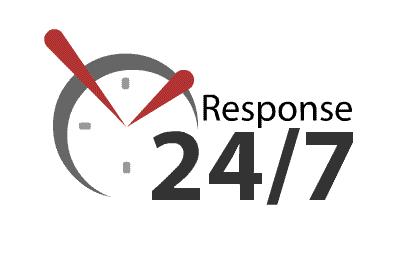Content
Period costs are not attached to products and the company does not need to wait for the sale of its products to recognize them as expense on income statement. According to generally accepted accounting principles (GAAPs), all selling and administrative costs are treated as period costs. Period costs are the costs that cannot be directly linked to the production of end-products. Examples of period costs include sales costs and administrative costs. Period costs are always expensed on the income statement during the period in which they are incurred.
What is the difference between product and period costs important?
Thus, it is fair to say that product costs are the inventoriable manufacturing costs, and period costs are the nonmanufacturing costs that should be expensed within the period incurred. This distinction is important, as it paves the way for relating to the financial statements of a product producing company.
This product cost (purchase price) appears on the balance sheet as an asset (unexpired cost) till a sale is made. Government agencies frequently provide detailed guidelines on the allowable and non-allowable items in a product cost. For example, some government agencies explicitly exclude marketing costs from reimbursement to contractors and may reimburse only a part of R&D costs. 2.12 shows how a specific contract may allow for all design and production costs and part of R&D costs. (i) It is difficult to select equitable bases to apportion these costs to products.
Reviewed by Subject Matter Experts
Utilities for the retail shop as well as the cashier’s wages are period costs. These product costs appear as assets on the balance sheet until the product is sold. When a sale is recorded, these product costs are transferred to cost of goods sold. The difference between sales and cost of goods sold is the gross margin from which selling and administrative expenses are deducted to determine the net income for the accounting period. Apparently this may be a subsequent accounting period and not necessarily the period in which the product has been manufactured and product costs have been incurred.
- The company has one very large manufacturing facility but has a few dealerships and offices around the country.
- Firms account for some labor costs (for example, wages of materials handlers, custodial workers, and supervisors) as indirect labor because the expense of tracing these costs to products would be too great.
- Both terms are important in the development of an income statement.
- Both of these types of expenses are considered period costs because they are related to the services consumed over the period in question.
- The one similarity among the period costs listed above is that these costs are incurred whether production has been halted, whether it’s doubled, or whether it’s running at normal speed.
In a manufacturing organization, an important distinction exists between product costs and period costs. In a manufacturing organization, an important difference exists between product costs and period costs. In a nutshell, we can say that all the costs which are not product costs are period costs. The simple difference between the two is that Product Cost is a part of Cost of Production (COP) because it can be attributable to the products.
Product Costs & Period Costs (Accounting) – Explained
Selling costs can vary somewhat with product sales levels, especially if sales commissions are a large part of this expenditure. Now that we have taken a bird’s eye view of the matching principal, let’s look into the meanings of and difference between product costs and period costs. It is important to note that personnel outside production activity e.g. administration or sales staff are accounted for neither as direct labour nor manufacturing overheads.
- Also, they spent $1,000,000 on market research and $1,000,000 to boost brand awareness during the fourth quarter.
- Manufacturing overhead is all the other stuff that does not fit into the direct materials classification or the direct labor classification but is still a product cost.
- Other examples of period costs include marketing expenses, rent (not directly tied to a production facility), office depreciation, and indirect labor.
- Based in Atlanta, Georgia, W D Adkins has been writing professionally since 2008.
- Finally, both executives’ salaries are period costs since they also do not work on the production floor.
- What about the rest of the workers that were mentioned in our list above?
Let’s look at which costs are considered product costs and which are period costs and what defines each of these costs. Product costs are costs that are incurred to create a product that is intended for sale to customers. Product costs include direct material (DM), direct labor (DL), and Period and Product Costs manufacturing overhead (MOH). For most kinds of business, expenses break down into product cost — including inventory — and period cost. If you run a business, distinguishing between types of inventory, other product costs and period cost is an important part of managing expenses.
What are Period Costs or Non-Manufacturing Costs?
Product Cost is the cost that is attributable to the product, i.e. the cost which is traceable to the product and is a part of inventory values. On the contrary, Period Cost is just opposite to product cost, as they are not related to production, they cannot be apportioned to the product, as it is charged to the period in which they arise. Many employees receive fringe benefits paid for by employers, such as payroll taxes, pension costs, and paid vacations.
Non-manufacturing costs are generally broken down into selling costs and general and administrative costs. An example of a product cost would be the cost of raw materials used in the manufacturing process. Product costs also include Depreciation on plant, expired insurance on plant, production supervisor salaries, manufacturing supplies used, and plant maintenance. To illustrate, assume a company pays its sales manager a fixed salary.
For example, John & Muller company manufactures 500 units of product X in year 2022. Out of these 500 units manufactured, the company sells only 300 units during the year 2022 and 200 unsold units remain in ending inventory. The direct materials, direct labor and manufacturing overhead costs incurred to manufacture these 500 units would be initially recorded as inventory (i.e., an asset).
Why do companies identify product and period costs?
The matching principle indicates that expenses are recognized in the same period in which related revenue is recognized. It is important to separate period costs from product costs because income, expenses, and net income could be misstated if one capitalizes period costs to inventory instead of expensing them.
All expenses incurred in the factory or manufacturing unit for producing the assets are product or manufacturing costs. Period cost is not in manufacturing or transporting the assets to their final destination. Period costs are on the income statement as expenses in the period they were incurred.
So, take a read of the article, that sheds light on the differences between product cost and period cost. Other examples of period costs include marketing expenses, rent (not directly tied to a production facility), office depreciation, and indirect labor. Also, interest expense on a company’s debt would be classified as a period cost. Overhead or sales, general, and administrative (SG&A) costs are considered period costs.
In other words manufacturing overheads is like a reserve where production cost are “binned” if they escape direct material, direct labour costs or direct expenses. For example, factory rent, depreciation of machinery, heating and lighting costs, repairs etc. The product costs for a retailer will be the amount paid to the supplier plus any freight-in.
These items are directly traceable or assignable to the product being manufactured. Product costs only become an expense when they are sold and become period costss. Period costss are all the costs that are expired non product costs.
- As with selling costs, all organizations have administrative costs.
- Product costs include direct material (DM), direct labor (DL), and manufacturing overhead (MOH).
- For example, costs like advertising, sales promotion, consulting fees may be expected to provide future benefits, but they are usually expensed when incurred.
- Period cost is not in manufacturing or transporting the assets to their final destination.
- We now know that those product costs are direct materials, direct labor and overhead.
- Product costs are initially attached to product inventory and do not appear on income statement as expense until the product for which they have been incurred is sold and generates revenue for the business.
Both product costs and period costs may be either fixed or variable in nature. Two issues exist when businesses classify product costs for a manufacturer. They must distinguish between manufacturing and non-manufacturing operating costs, and determine how to allocate indirect costs among different products.




Leave a Reply
Want to join the discussion?Feel free to contribute!